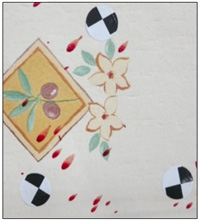|
View in browser: https://www.crime-scene-investigator.net/newsletter/0622.html
|
||
|
JUNE 2022 | ||
|
Welcome to the June 2022 Crime Scene Investigator Network Newsletter
| ||
|
This Month's Featured Resource on the Crime Scene Investigator Network Website | ||

The Biological Evidence Preservation Handbook: Technical Working Group on Biological Evidence Preservation The Biological Evidence Preservation Handbook offers guidance for individuals involved in the collection, examination, tracking, packaging, storing, and disposition of biological evidence. This may include crime scene technicians, law enforcement officers, healthcare professionals, forensic scientists, forensic laboratory managers, evidence supervisors, property managers, storage facility personnel, lawyers, testifying experts, court staff members, and anyone else who may come in contact with biological evidence. While many of the recommendations relate to the physical storage, preservation, and tracking of evidence at the storage facility, this handbook also covers the transfer of the material between the storage facility and other locations and discusses how the evidence should be handled at these other locations. This report is divided into five main sections that detail issues and make recommendations related to biological evidence storage, tracking, preservation, and disposition. A glossary, which provides standard definitions of the technical terms used in this report, follows these sections. |
New CSI and Forensic Job Announcements
|
|
|
The most comprehensive listing of Crime Scene Investigation and Forensic To be notified of job openings as they are posted, follow us on Twitter: Job Posting Alerts |
||
|
Forensic Examiner I or II
Rapid City Police Department, Rapid City, South Dakota, USA Final Filing Date: July 4, 2022 Responds to and documents major crime scenes through photography, detailed notes, drawings, and diagrams. Documents the location of and collects evidence following accepted forensic science principles. This includes packaging and submitting evidence to a secure storage facility. <View complete job listing> |
||
|
Forensic Technician
Spokane County Sheriff, Spokane, Washington, USA Final Filing Date: August 12, 2022 Process and document crime scenes with or without the assistance of additional Forensic staff by taking all necessary photographs and/or video, searching for latent fingerprints, collecting items of evidence and preserving them for further analysis. <View complete job listing> |
||
|
Forensic Investigator
Garland Police Department, Garland, Texas, USA Final Filing Date: Open until filled Investigate crime scenes by means of collecting, documenting, analyzing, and presenting evidence. Analyze, process, and document crime scenes by use of various techniques including photography, digital video, laser scanning, measurements and diagrams. <View complete job listing> |
||
|
Crime Scene Specialist
Kingsville Police Department, Kingsville, Texas, USA Final Filing Date: Open until filled Processes crime scenes for evidence and fingerprints. Examines and evaluates evidence and determines techniques and procedures to be used in the development of latent prints on diverse items of physical evidence by using physical, chemical, optical or any combination of techniques appropriate to the substance being examined. <View complete job listing> |
||
 |
||
|
Latent Print Examiner
Corpus Christi Police Department, Corpus Christi, Texas, USA Final Filing Date: Open until filled Conduct high quality biometric examinations in the area of friction ridge analyst; including comparison of latent fingerprint, palm prints, and footprints using ACE-V (Analyze, compare, evaluate - verify) methodology for the purpose of identifying criminals, non-criminals and questions of identity. <View complete job listing> |
||
|
Property & Evidence Specialist
Sunny Isles Beach Police Department, Sunny Isles Beach, Florida, USA Final Filing Date: June 30, 2022 Accepts and logs all property and evidence. Takes inventory of evidence; inventories property in accordance with department policy. Stores evidence. Inventories equipment and supplies in Police Department. Transports evidence to Dade County, i.e., drugs or lab items such as fingerprints. <View complete job listing> |
||
|
Evidence Technician
Douglas County Sheriff, Minden, Nevada, USA Final Filing Date: July 4, 2022 Receive and handle crime scene evidence; organizes and stores items maintaining chain of custody. Processes evidence in laboratory; performs fingerprinting, examination and comparison of fingerprints, presumptive drug testing, and photography/videography. Processes crime and death scenes; performs fingerprinting, evidence collection, photography/videography, and report writing. <View complete job listing> |
||
|
Deputy Coroner I/II
Sacramento County Coroner, Sacramento, California, USA Final Filing Date: August 26, 2022 Conducts investigations to determine the jurisdiction, circumstances, manner and cause of deaths which occur within the jurisdiction of the Sacramento County's Coroner's Office. <View complete job listing> |
||
|
Search for more job listings in Crime Scene Investigations and Forensics To be notified of job openings as they are posted, follow us on Twitter: Job Posting Alerts |
||
|
Other Resources on the Crime Scene Investigator Network Website
|
||
|
Not Subscribed to this Newsletter?
|
||
|
If you are not subscribed to this newsletter, you may subscribe with this link: SUBSCRIBE via email |
||
|
To Unsubscribe
|
||
|
To unsubscribe from future e-mail alerts, please click here: UNSUBSCRIBE Copyright ©2022 Crime Scene Resources, Inc. Crime Scene Investigator Network |



